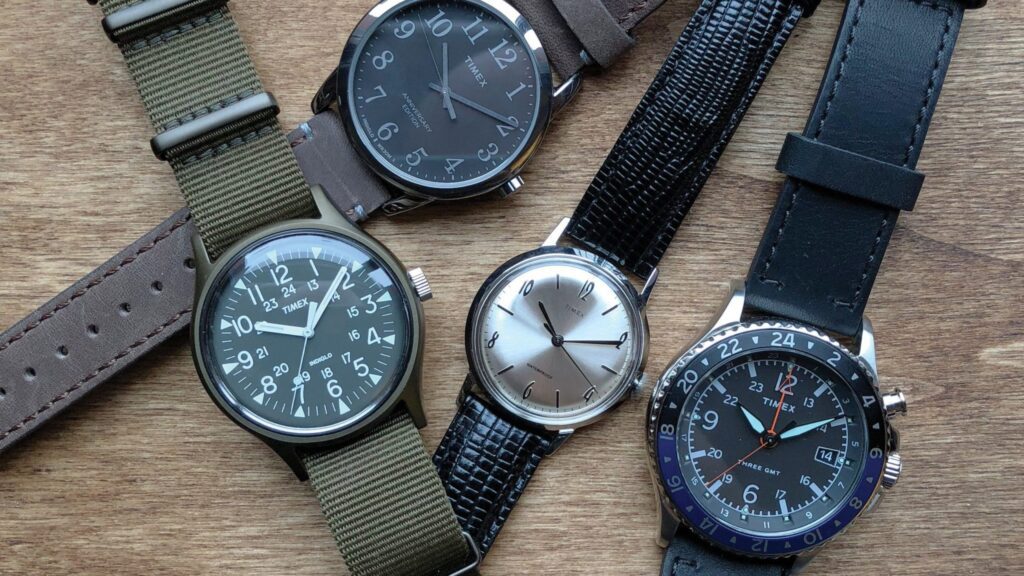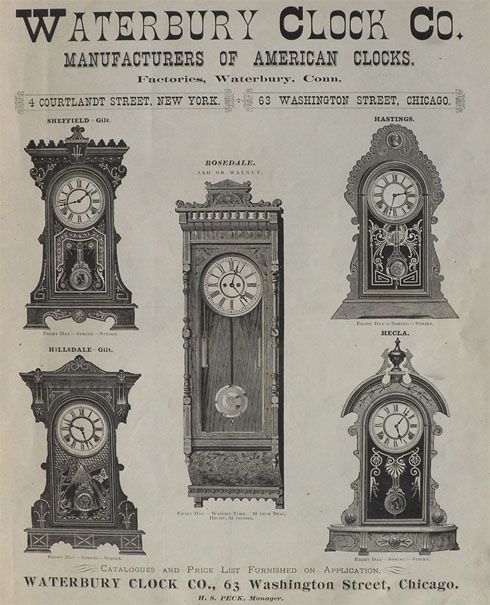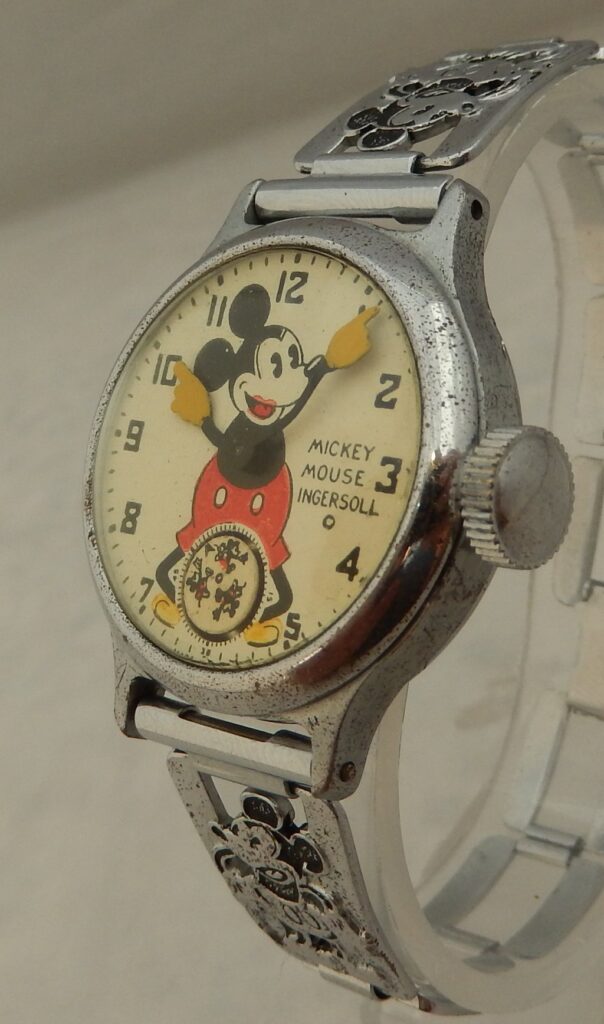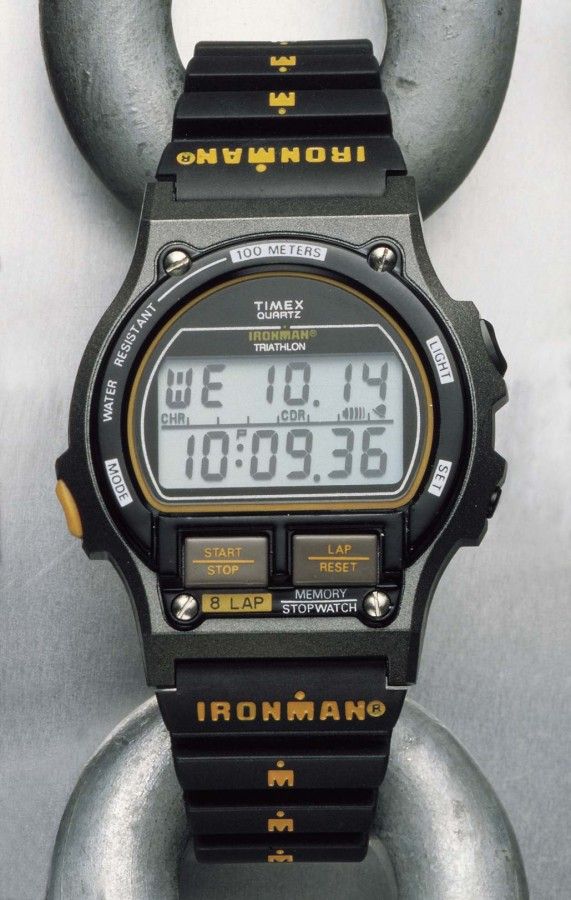
Timex, as a brand, has fundamentally redefined what it means to manufacture and sell watches. Bringing an affordable and mass-produced watch to the market, their innovations have historically eased the price for everyday folks—making convenient timekeeping accessible for more than a century. Although they’re a household name now, Timex had to put in some serious leg work to establish itself so well in wristwatch culture. With 165 years worth of history, the scope and evolution of Timex as an existing entity is impressive—and didn’t always involve wristwatches. In fact, in order to survive in an ever changing world—both culturally and technologically—Timex wore many faces to get where it is today.

What is now known as Timex was originally a clock manufacturer by the name of Waterbury Clock Co.. This brand was established in 1854 in Waterbury Connecticut, a land dubbed the “Switzerland of America” in its day (and the current site of Timex Group U.S.A.). Started by brass company Benedict and Burnham, the Waterbury Clock Co. used brass materials in manufacturing clocks. The company itself garnered a decent level of success and by 1877 began a sister brand—the Waterbury Watch Co.. Waterbury Watch Co. was where Waterbury began to build steam with watch manufacturing. Finding an inexpensive way to bring their brassworks into pocket watches, the first Timex predecessor was put into full production by 1878 (boasting 200 built a day). Within one decade, Waterbury Watch Co. was the largest volume producer of watches in the world.
Around this latter part of the 19th century, another key player in the evolution of Timex was around: Ingersoll. Originally a clock manufacturer (like Waterbury), they began dipping their toes into the watch world. By 1896—under what was new ownership for them—Ingersoll designed their “Yankee” pocket watch. This watch was another Timex predecessor, with Waterbury Watch Co. as their key supplier. When it was made, this inexpensive watch sold for just one dollar (~30USD today). Because of the success of the Yankee, it was dubbed the watch that “reinvented the dollar”. As time moved forward for Waterbury and Ingersoll, the sister company Waterbury Watch Co. began slipping in popularity. So, by 1912, Ingersoll purchased the Waterbury watch manufacturing plant from the Waterbury Clock Co..
The relationship between Waterbury and Ingersoll continued into the early twentieth century, building steam toward what would be Timex; With WWI requiring the newly emerging wristwatch technology, Waterbury started manufacturing wristwatches for military gunners. Before “it takes a lickin’ and keeps on tickin’” was a popular phrase, these Waterbury watches were fighting on the front lines. At this time, Ingersoll was likewise finding similar markets outside the United States. However, because of Waterbury’s success, and Ingersoll’s relative lack thereof (during WWI), Waterbury purchased the Ingersoll brand outright in 1922.

Furthermore, between WWI and WWII the Ingersoll brand (by Waterbury) had some struggles getting by. The great depression was hitting U.S. business pretty hard. However, in the early 1930s the Ingersoll brand picked up a license deal with Walt Disney to produce Mickey Mouse watches. This helped get the Ingersoll brand by decently well—but Waterbury was becoming insolvent. There did come a remedy for this, however. During WWII Waterbury was taken over by Thomas Olsen. Effectively saving the company from falling apart, Olsen’s leadership instigated the manufacturing of military parts for government missiles. It was a far cry from watches, but it was the success of these parts that paved the final stone in moving Waterbury toward designing the Timex wristwatch.
The success of Waterbury’s military endeavors lead to a company name change, the “United States Time Co.”. Under this name, with a split from the Ingersoll brand, the production of the first Timex watch was kicked-off (in 1949). By 1950, the Timex wristwatch was formally introduced to U.S. consumers. Combining the name “Time” from Time Magazine and getting its “x” from “Kleenex”, (Update 2024. The story that Timex got its name by combining “Time” from Time Magazine and the “x” from “Kleenex” is a myth. The true origin of the Timex name is more straightforward. The United States Time Corporation rebranded its watches in the early 1950s, choosing “Timex” as a catchy and modern name.) – this new timepiece was a gambit by U.S. Time Co. to demonstrate its innovative spirit and hardworking engineering. If the current prominence of Timex is any indication, this endeavor in design was a success! Importing “Armalloy” war time tech into their watches, the Timex could stress test incredibly well—and was inexpensive to sell/manufacture. With a successful string of TV; print; and radio advertising, Timex became the American watch. By 1962, the Timex watch accounted for one in every three watch sales in the United States. As a result, by 1969 “United States Time Co.” became the “Timex Corp.”

From the 1960s-early 2000s, Timex Corp continued to develop the brand, as well as manufacture personal tech devices and business machines. One example of this was their relationship with Polaroid. This relationship began in 1950, but Timex continued being Polaroid’s exclusive manufacturer through the 1970s. By 1980 Timex ended up having to pare down to primarily manufacturing watches—due to market demand. However, this lead them toward their successful Iron Man watch series, which was the number one selling watch—globally—for a whole decade (1986-1996). Furthermore, the 90’s and early 2000s saw a huge diversification in branding—regarding watches for Timex Corp. They acquired luxury brands, streetwear brands, worked with Microsoft on new tech, and even teamed back up with Disney for a “Disney Classics” watch line.
Nowadays the Timex Group B.V. runs the show—acquiring the brand in 2008. They’re a Dutch holding company, overseeing Timex brand business and manufacturing around the globe. Since this acquisition, Timex began dividing its labor between the Timex Group, USA (inc.) and the Timex Group—due to a recent five year slip in profits (hardly an issue for such a long standing brand).
Though Timex history boasts many ups and downs, they have established a global empire of timekeeping. Indeed, Timex is a goliath of a watch brand. Beyond the strength of their timepieces, Timex is a veritable iron man of sales; marketing; and adaptability in a market that’s always changing with the times. They have successfully moved from brass clocks to digital dive watches, and more, over the past 165 years. Their affordability is a key part of this success, making it incredibly easy to pick one up and enjoy. Currently, the brand is re-releasing some of its old favorites. So, keep an eye out for new takes on old favorites—they will surely “take a lickin’ and keep on tickin’” in the years to come.
Times Ticking has been in operation for more than 30 years, since 1982. We have performed watch repair for customers both locally and internationally. If it Ticks! We KNOW it! Our team of watch repair technicians have a combined experience in watchmaking of over 120 years.

